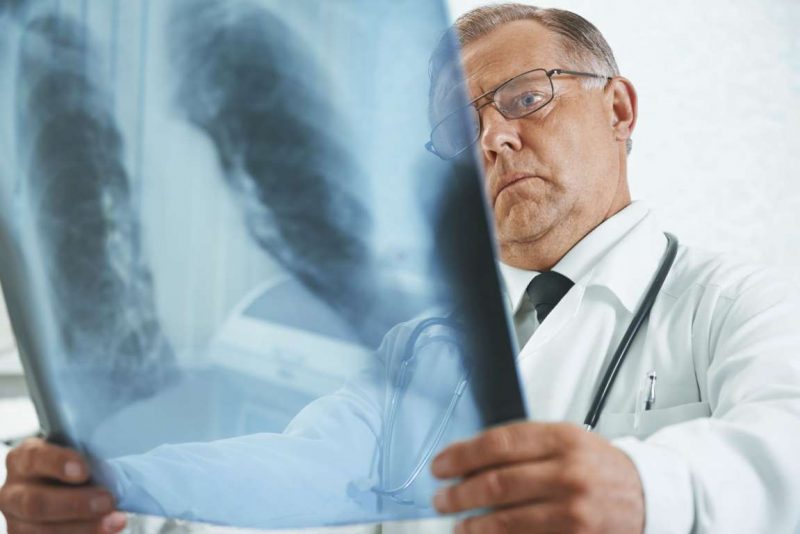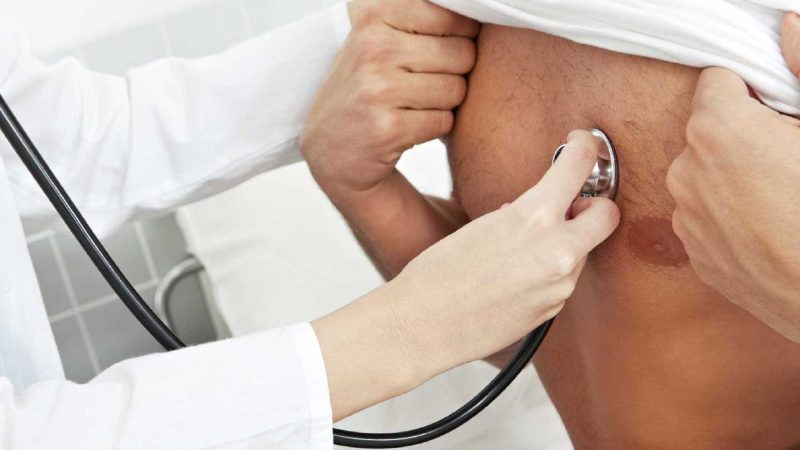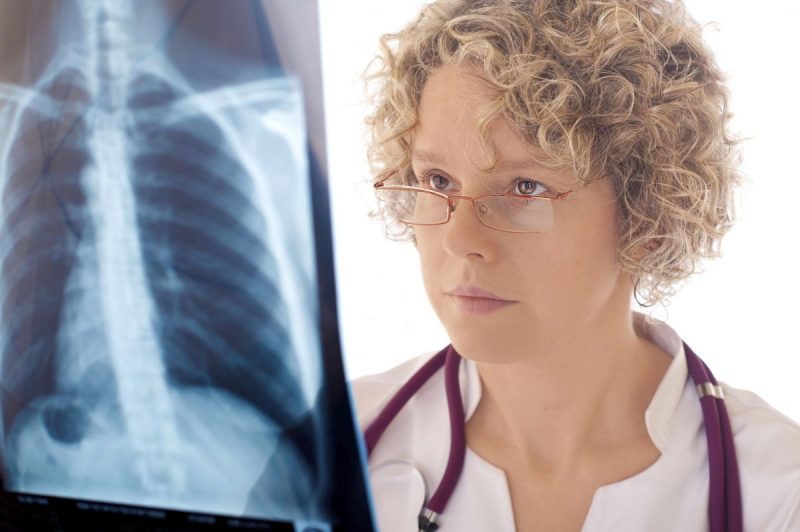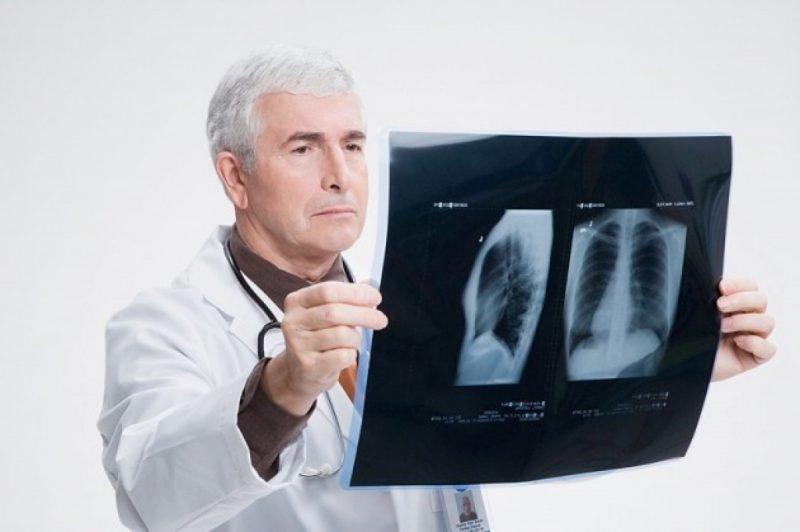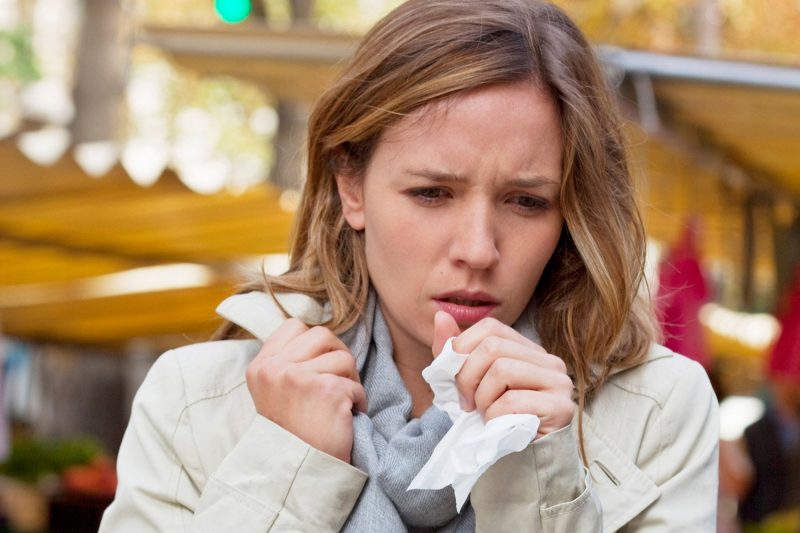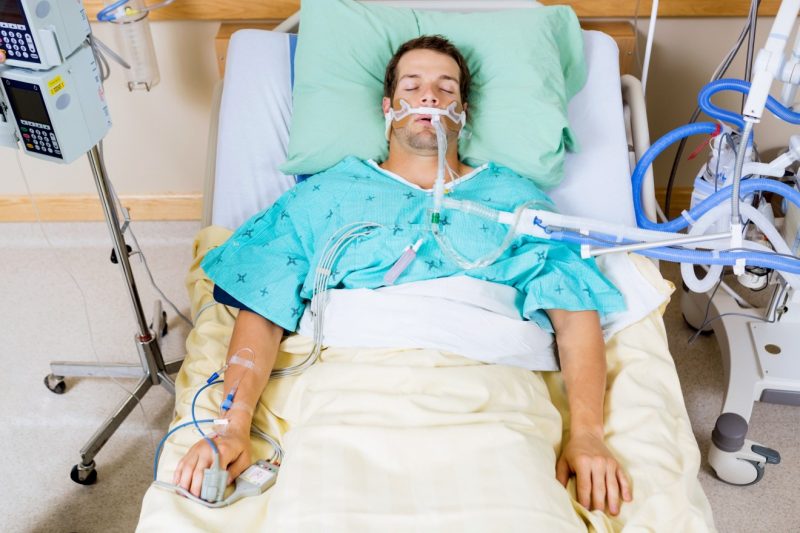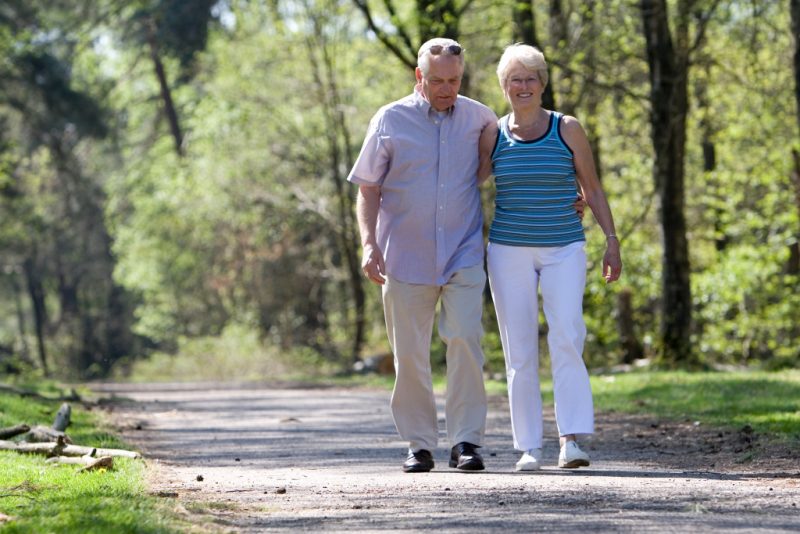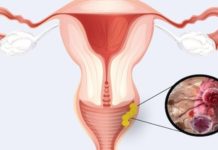The term "community-acquired pneumonia" refers to a whole group of diseases characterized by general localization and similar signs of manifestation. However, the causes of the disease, its course and further prognosis in each case may vary significantly. The success of treatment depends on the accurate determination of the origins of the disease, the correct selection of drugs from the antibiotic group and the elimination of all factors that aggravate the condition.
Material Content:
What is community-acquired pneumonia?
This name refers to pneumonia, the causes of which are not associated with a hospital stay. In other words, all diseases of this kind are divided into two broad categories: community-acquired and hospital (those that arose during the treatment period in the hospital or after no more than three days from discharge).
Pneumonia is considered one of the most common infectious diseases.
According to doctors, every year in Russia we have about one and a half million patients, among whom the most vulnerable group is the elderly. In this category of citizens, 25 to 44% fall ill.
Inflammation of the lungs is also one of the most common causes of death due to infection. Among lung cases, no more than 5% die. At the same time, in the most severe forms, mortality can reach 50%.
Pneumonia is a disease, which is usually of an infectious nature.In the presence of the pathogen, a pathological process develops in the smallest structures of the lungs - the alveoli.
- All signs of inflammation are characteristic of this process.
- In the tissues forming the alveoli, puffiness appears.
- In the cavity of the vesicles, which are normally filled with air, exudate is detected that stands out from the surrounding capillaries.
The defeat of the respiratory system is accompanied by a weakening of their main function - oxygen saturation of the blood. The lack of treatment contributes to the proliferation of the inflammatory process with the involvement of an increasing volume of tissue.
Causes and Risk Factors
Extremely rarely, inflammation begins for a reason not related to the penetration of the infection. Such diseases occur against the background of injuries affecting lung tissue, as a result of which the free outflow of secretion is disrupted.
The most common reason is the penetration of an infectious agent from non-sterile parts of the respiratory tract (nose, oropharynx) into the deep parts of the lungs.
The upper sections are colonized by a huge number of microbes, but only some of them are highly pathogenic and can cause inflammation of the alveoli, being found inside the lungs even in the smallest quantities. These pathogens are either constantly present in the upper respiratory tract, or they get there along with contaminated air.
The causative agents of the disease can be both bacteria and viruses and fungi:
- One to two thirds of cases are pneumococcal infection. Pneumococcus is the most common cause of the disease.
- Less commonly, mycoplasma or chlamydia (12.5% each) becomes the source of the disease. In such cases, we are talking about "atypical" inflammation.
- Less than 5% of patients from pathological fluids manage to isolate legionella or hemophilic bacillus. These causative agents of community-acquired pneumonia are most common in the warm and humid climate of the Mediterranean.
- Viruses and fungi account for up to 6% of cases. An important role in their activity is seasonality. They are more viable in autumn and winter. Among this category of pathogens, the most common causative agent is the influenza virus.
- In a significant number of cases (about 40%), it is generally not possible to identify an infectious agent.
Factors contributing to the development of the disease include:
- smoking;
- alcohol abuse;
- decreased motor activity;
- lack of vitamins;
- immunodeficiency conditions;
- genetic diseases, such as cystic fibrosis, in which the condition of the mucous membranes worsens;
- not treated inflammatory diseases of the bronchi and larynx;
- the presence of a constant inflammatory process in the oral cavity.
As evidence to the last point, we can cite the results of tests conducted over the course of three years from 2013 to 2016. Scientists have identified a direct relationship between the incidence and condition of the teeth. For a contingent not visiting a dentist with a regularity of 2 times a year, the probability of infection increased by 86%.
Symptoms and signs of the disease
A typical pneumonia provoked by microbes common for this disease, such as streptococcus, hemophilic and Escherichia coli, as well as Klebsiella, is characterized by a vivid clinical picture:
- The first sign of the disease is a temperature jump of up to 39 - 40 ºС. The heat in pneumonia usually cannot be eliminated by conventional means such as paracetamol.
- From the very first days, the patient develops a profuse and moist cough. There is a separation of greenish sputum.
- Sweating increases at night.
- With the defeat of a large area of the lungs, the patient experiences chest pain.
- The skin becomes pale.
- Dyspnea may be present.
When infected with atypical microbes (mycoplasma, chlamydia, legionella), the severity of symptoms gradually increases. At the beginning of the disease, a low temperature is present.The patient's condition is similar to the state of acute respiratory viral infections. He is dominated by muscle and headaches, lethargy and general malaise. The cough does not begin immediately. At first, a sore throat appears, then a dry cough, a few days later it turns into a wet one.
Diagnosis and treatment to the doctor
The lack of improvement for more than five days is an occasion to consult a doctor and be examined.
The specialist should suspect pneumonia already at the stage of questioning and examination. In a patient with a typical picture, when tapping the chest, short sonorous sounds are clearly audible. When examining a phonendoscope, the doctor draws attention to the trembling of the voice and wheezing.
At the patient’s appointment, a preliminary diagnosis is made indicating the localization. Due to the physiological structure, right-sided pneumonia is more common, in which the pathological process develops on the right. In elderly patients, due to a lack of physical activity, lower-lobe pneumonia (inflammation involving the lower lobes of the lung) is most difficult.
After a preliminary diagnosis is established, the patient is sent for radiography and a blood test. According to a blood test, you can determine the nature of the disease, to understand whether inflammation is caused by a virus or a bacterium. With a typical development of inflammation, areas of blackout are clearly distinguished on the x-ray.
Using X-ray, localization is established up to the lobe and segment. Enter the final diagnosis. Atypical pneumonia does not give such a clear picture. It is more difficult to detect its foci using a similar method.
To clarify the diagnosis, the patient may be given a referral for sputum analysis. Separated from the lungs are examined by microscopy and culture on culture media. Using a detailed study, it is possible to determine the pathogen and prescribe the most appropriate treatment.
Additional diagnostic methods include computed tomography and bronchoscopy. They are rarely resorted to and only when the basic methods have not given a clear understanding of the situation.
Treatment of pneumonia
The most important role in the treatment of pneumonia is given to antibiotics.
The choice of drugs is based on diagnostic results. Antibiotic drugs are selected taking into account the type of pathogen and its specific type.
Laboratory sensitivity of microorganisms is not always determined. Sometimes the same microbes can behave differently and respond accordingly to medications inside the body and in vitro. Therefore, the selection of antibiotics is often done empirically.
The effectiveness of the treatment is evaluated, including by external signs. If the patient's condition does not improve within three days, the previous drug is canceled and another is prescribed.
To help the main treatment, add agents that expand the bronchi and facilitate breathing. Along with antibiotics, drugs that stimulate sputum outflow, as well as drugs that reduce swelling, can be prescribed.
Drugs and antibiotics
In typical pneumonia and in cases where the type of pathogen cannot be established, antibiotics of a number of penicillins and cephalosporins protected by clavulanic acid (Flemoxin, Ceftriaxone) are administered, which are administered intramuscularly or intravenously. For allergies, these drugs can be replaced with macrolides (Erythromycin, Clarithromycin), carbapenems and fluoroquinolones (Levofloxacin).
For all patients, drugs are selected individually depending on the presence of concomitant chronic diseases and the characteristics of the reaction. The duration of therapy is determined by the severity of the condition. In any case, treatment continues for at least three days after normalization of the temperature and the appearance of visible improvements in radiography.
To help antibiotics are prescribed:
- bronchodilators (Salbutamol);
- mucolytics (Fluimucil, ACC);
- corticosteroids ("Singular").
Medicines are used in the form of pills, syrups, injections and inhalations.Their role is to improve the general condition of the patient. These kinds of drugs are used to suppress the main symptoms: relieve congestion, ease breathing, and reduce pain in the lungs. They remove puffiness, improve bronchial aspiration, and create conditions for the release of alveoli from seeded secretions.
Folk remedies for community-acquired pneumonia
With pneumonia, hospitalization is necessary. Community-acquired pneumonia in children and the elderly is treated only in a hospital setting.
A doctor can take an adult patient on an outpatient basis only if there is no threat to life and health.
Treatment of community-acquired pneumonia exclusively with folk remedies is unacceptable. But if the doctor permits the use of such methods, they can be included as an addition to the main therapy.
Herbs such as:
- marshmallow;
- licorice;
- violet;
- sage;
- eucalyptus.
They can be used individually and together as a finished pharmacy breast collection. A tablespoon of herbal powder is brewed in half a glass of boiling water. Fifteen minutes later, the infusion is filtered and drunk.
Cough herbs are taken after meals. On a day, the medicine is brewed three to four times. Relief can be felt on the third or fourth day. In general, herbal medicine lasts about two weeks.
Is pneumonia contagious to those around you?
Pneumonia, of course, can be transmitted from person to person, but this does not mean that after any contact with the patient infection will follow. An important criterion in assessing the situation is the strength of individual immunity.
Exhaled sick air will contain pathogens that cause inflammation. They can penetrate into the lungs of others. However, among those who are faced with the infection, not everyone will get sick. If someone's immunity is strong enough, he can easily defeat the enemy.
No less important is the concentration of the pathogen in the air. Not every amount of a microbe can provoke a disease. If very few pathogenic particles get into the lungs, then most likely they will be destroyed by immune cells.
Possible complications
Inflammation of the lungs can give impetus to the development of purulent-necrotic or destructive processes with rejection of the affected tissue, resulting in an abscess or gangrene.
The accumulation of purulent discharge adversely affects lung function, causing the development of obstruction or obstruction. Sometimes pneumonia results in acute respiratory failure.
If untreated, the inflammatory process can spread to neighboring and distant tissues, causing endocarditis, meningitis.
The most serious consequences are pulmonary edema and sepsis, which increase the likelihood of death of the patient.
Preventive measures
Since the main factors in the development of the disease are weakened immunity, low mobility, in which the lungs are poorly ventilated, and a high bacterial load of the surrounding air, prevention should include the following measures:
- intake of vitamin and mineral complexes in the offseason;
- regular walks in the fresh air;
- compliance with the regime of the day, the exclusion of stressful situations
- proper nutrition and getting rid of bad habits;
- daily exercise;
- timely treatment of diseases caused by respiratory infections;
- maintaining the oral cavity in good condition;
- regular wet cleaning;
- mandatory ventilation even in the cold season;
- refusal to attend mass events.
Inflammation of the lungs provokes a huge number of microorganisms. In each case, the disease can proceed in different ways. Staying home and being treated only with folk remedies is very presumptuous. In order not to encounter more serious consequences, you need to contact a specialist in a timely manner.



